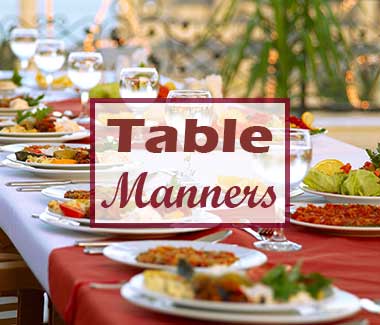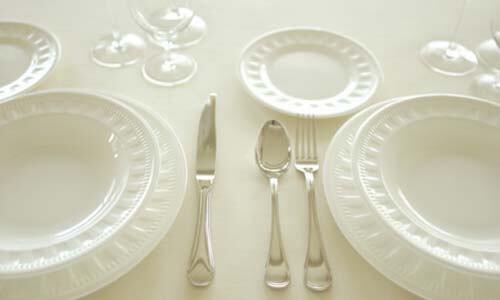Argentina Dining Etiquette
Dining etiquette for pouring wine. As in Bolivia and other Southern Cone countries, there are some important rules about pouring wine: never pour it backwards into the glass, as this means that you very much dislike the person you are pouring for, and do not use your left hand to pour the wine for the same reason.
Dining etiquette for drinking mate. There is a tea in Argentina called mate, which is served in a gourd, often with an elegant silver straw (a bombilla). The etiquette for drinking mate is to take a sip and pass the gourd to your neighbor; they do the same in turn.
Dining etiquette for toasts. The most common toast is salud (to your health).
table manners
Dining etiquette for beginning to eat. Do not begin eating until the host says, iBuen provecho!
Dining etiquette for utensils. Argentines do not switch knives and forks. The knife remains in the right hand, and the fork remains in the left. To cut meat, hold the meat with your fork in your left hand, and cut the meat with the knife in your right hand through the tines of the fork. When you are finished with your meal, cross your knife and fork across the plate, with the tines facing downward.
Dining etiquette for the place setting. The fork and spoon above your plate are for dessert. Always start from the outside and work your way in, course by course. There will be separate glasses provided at your setting for water and white and red wine or beer (after-dinner drink glasses come out after dinner).
Dining etiquette for eating bread. Bread is sometimes served without butter; in that case, there usually will not be a butter knife, nor will there be a bread dish: your bread is placed on the rim of your main plate or on the table by your plate.
Dining etiquette for utensils. When not holding utensils, your hands are expected to be visible above the table: this means you do not keep them in your lap; instead, rest your wrists on top of the table (never your elbows)
Dining etiquette for passing food. At the table, pass all dishes to your left.
Dining etiquette for eating salad. Never cut the lettuce in a salad. Fold it with your knife and fork into a bundle that can be picked up with your fork.
Dining etiquette for seating. The most honored position is at the head of the table, with the most important guest usually seated next to the host or hostess (women to the right of the host, men to the right of the hostess).
Dining etiquette in restaurants. You will rarely be required to share a table. Waitstaff may be summoned by catching their eye and saying "Mozo".
Dining etiquette for discussing business. Take your cue from your Argentine associates: if they bring up business, then it's okay to discuss it (more often than not, over the coffee and brandy at the end of the meal), but wait to take your lead from their conversation.
Dining etiquette in the home. It is considered bad form to leave the dinner party, or the table, at any time. Allow more senior members of your party to enter rooms ahead of you: men should move aside to allow women to enter the room ahead of them.
Dining etiquette for paying the bill. Usually the one who does the inviting pays the bill, although the guest is expected to make an effort to pay. Sometimes other circumstances determine who pays (such as rank).
Dining etiquette for tipping. A 10 percent tip is usually sufficient in restaurants.

related:
south american dining etiquette



